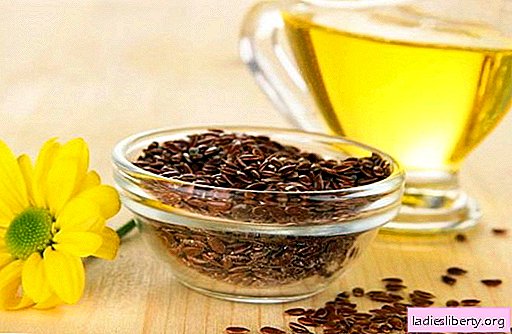
In recent years, more and more people began to pay considerable attention to health.
They give up bad habits, eat right, and replace "bad" foods with natural and healthy ones.
In their diet, bread was increasingly replaced with bread.
They are a dietary natural product with unique properties and valuable composition. They can be consumed at almost any age without harm to health.
Crispbread: composition as used
The benefits of bread were first of all appreciated by people who monitor their health. Their production technology is such that it allows maximum preservation of all useful properties and valuable substances.
In the bread rolls are:
• minerals: magnesium, phosphorus, potassium, iron, calcium, sodium;
• vitamins: niacin (PP), tocopherol (E), retinol (A), thiamine (B1), riboflavin (B2), pyridoxine (B6), pantothenic acid (B5), biotin (B7);
• cellulose;
• "slow" carbohydrates;
• unsaturated, polyunsaturated amino acids;
• alimentary fiber.
Each type of bread has its own composition and nutritional value. By their name, it is easy to determine which raw materials are the basis.
1. Rye bread. They contain: peeled rye and wheat flour of the second grade, bran from wheat, malt from rye.
The highest calorie content is 380kcal.
Nutritional value is:
- 10gr of proteins;
- 4.5g fat;
- 70g carbohydrates;
- 19g fiber.
2. Wheat Bread. In their production, germinated wheat grain, whole wheat flour is used. Calorie content is slightly lower - 360kcal per 100g.
The nutritional value:
- protein - 13.3;
- fat - 4.7g;
- carbohydrates - 69.8g;
- fiber - 20g.
3. Oat bread. In addition to oats, they contain flour and wheat grains. Calorie content is 302kcal.
The nutritional value:
- 11.8g of protein;
- 2.6g fat;
- 57.8g carbohydrates;
- 3.11g fiber;
- 13.4g of dietary fiber.
4. Buckwheat bread. They contain wheat, finely ground buckwheat. Calorie content 276kcal per 100g.
The nutritional value:
- proteins - 10.2g;
- fat - 0.7g;
- carbohydrates - 57.1g;
- fiber - 16g.
Calorie content is low. The average figure varies in the aisles of 320kcal per 100g. So many calories can be obtained if you eat 10-12pcs.
Crispbread is consumed both as a separate food, and in combination with many products. They are delicious for breakfast with ham, cheese, coffee or tea pate. They are a good addition to lunch or afternoon tea. Their packaging is convenient, and makes it possible to take bread for work, a picnic, and relaxation.
Nutritionists with weight loss recommend including bread in the diet. Despite the fact that their calorie content is on the same level as bread, fiber and “slow” carbohydrates are present in them. Bread rolls are easily digested, give a long feeling of satiety. Their fiber blocks the rapid absorption of carbohydrates. It is useful in this period to combine the bread with low-fat cottage cheese, vegetables, herbs.
Doctors recommend including bread in the diet or completely replacing bread with them in the prevention and treatment of kidney, heart disease. With their help, you can cope with the problems of the nervous system, thyroid gland, obesity, heartburn, atherosclerosis.
Crispbread: what are the benefits for the body
In the manufacture of bread, only high-quality and natural ingredients are used. It is these ingredients that made them popular. Crispbread is made from various types of cereals, so the benefits for the body directly depend on their composition.
Rye bread. This product is the most popular among lovers of good nutrition. Rye bread is rarely found in its pure form, usually wheat and wheat are present in them along with rye. This combination of cereals makes bread useful for health and dietary nutrition. Their useful properties are hidden in the composition. The presence of valuable and natural ingredients allows you to:
• remove excess water, salt, waste from the body;
• lose weight;
• strengthen the immune system;
• deal with digestive problems.
The benefit will increase several times if the bread is released from peeled rye flour with the addition of flax seeds and sunflower.
Buckwheat bread. Buckwheat itself belongs to dietary products, and the bread made from it has valuable and healthy properties. The moderate use of this variety stimulates the secretion of the stomach, normalizes the processes of digestion and assimilation of all food. They are recommended to be included in meals when:
• low hemoglobin level;
• existing diseases of the thyroid gland and liver;
• prevention of obesity;
• diabetes;
• anemia.
Doctors have repeatedly confirmed the benefits of buckwheat bread in the treatment of cancer. They contain slow carbohydrates. A small number of them quickly satisfies hunger, saturates the body with energy.
Wheat Bread. Nutritionists highly value wheat breads for their vitamin - mineral composition. They are used in medical, dietetic nutrition, because:
• normalize all metabolic processes in the body;
• help fight diseases of the digestive system;
• affect the microflora;
• help the body recover faster after operations and long serious illnesses.
They are recommended to be eaten by those who monitor their weight or try to cope with extra pounds.
Oat Bread. Although they are less popular than buckwheat or wheat, the health benefits of their use are considerable. They are recommended for:
• diabetes;
• tachycardia;
• arrhythmias;
• high cholesterol;
• atherosclerosis.
Oats, helping to absorb iron and carbohydrates, affect the kidneys, liver and pancreas, normalize the rhythm of the heart, and strengthen immunity.
Rice bread. They contain a whole palette of useful and valuable substances and compounds. Such a composition:
• slows down the absorption of incoming fats;
• removes accumulated toxins and waste;
• establishes the metabolism of all substances;
• helps to maintain weight;
• retains a sense of fullness;
• enhances the metabolism of carbohydrates and fats;
• supports skin, nails, hair in good condition;
• positively affects the heart and blood vessels;
• relieves insomnia;
• strengthens the immune system.
Corn bread. They are based on a mixture of corn and wheat flour. They are quite widely used in dietary, therapeutic and preventive nutrition. They are perfect for people of any age. In a short time, fill the body with energy, satisfy hunger. They are allowed with:
• problems with the digestive system;
• with diseases of the kidneys and liver;
• tendency to overweight,
• with reduced hemoglobin;
• predisposition to allergies and dermatitis.
Multigrain bread. They include several varieties of cereal crops. They are made for health and diet food. Often, manufacturers enrich their composition with useful substances: extract from seaweed, lecithin, bran, herbs, spices, nuts, beta - carotene. Bread rolls rid the body of toxins, heavy metals, toxins, normalize metabolic processes.
To determine the choice of bread, it is important to know the features and problems of your body. Each of their types helps to cope only with certain types of diseases.
Crispbread: what is the harm to health
People who do not know the rules and the technology for making “wholesome” breads buy in the shops a product made by extrusion, that is, by ordinary baking. Although this product has the name "bread", but it has nothing to do with real bread. This product has a large number of calories and it is impossible to use it for those who have problems with digestion and overweight.
When buying them, it is important to pay attention to the composition indicated on the package. Damage to the body will be caused by those bread rolls containing yeast, premium flour, starch and other additives in the composition. It is better to refuse to buy such bread
Damage from bread rolls in case of their unlimited use will be shown. Such eating will nullify a person’s benefit and desire to improve his health. There are several types of bread and each of them has its own additives. It is important to know exactly which type is right for your body.
Damage to health will occur if drinking regimen is not respected. For the digestion and assimilation of bread, the body needs at least 2 liters of water per day. Insufficient volume can lead to digestive problems and constipation.
Many people have an allergic reaction after eating bread. Its manifestation is associated with intolerance to one of the components of the product. Their presence in the diet should be excluded if itching, redness, or skin rashes appear.
There is an age limit. Children under 3 years of age and older people after 65 years of age are not recommended to eat them. In these age categories, rough food will be difficult for the stomach and intestines to digest.
Crispbread for children: useful or harmful
Crispbread is a natural product rich in important vitamins, carbohydrates, minerals, which are so necessary for a growing and developing baby's body. They do not contain harmful preservatives, dyes, disintegrants, sugar, chemical additives. It is with this product that pediatricians advise starting parents to acquaint the baby with bread products.
But doctors warn, the fiber in the composition of the bread makes them for a fragile ventricle a tough and heavy product. To avoid the feeling of heaviness and discomfort, do not rush and give babies up to 3 years old bread. Unable to chew food properly, a small child can easily choke on their small pieces.
A child over 3 years old can be given bread rolls, but in limited quantities. Despite the fact that children like to crunch with them and constantly ask for supplements, you should not give more than 4 pieces a day.
When using bread, do not forget that they are a food product, not a medicine. Their small, moderate eating will undoubtedly be beneficial for the body.











